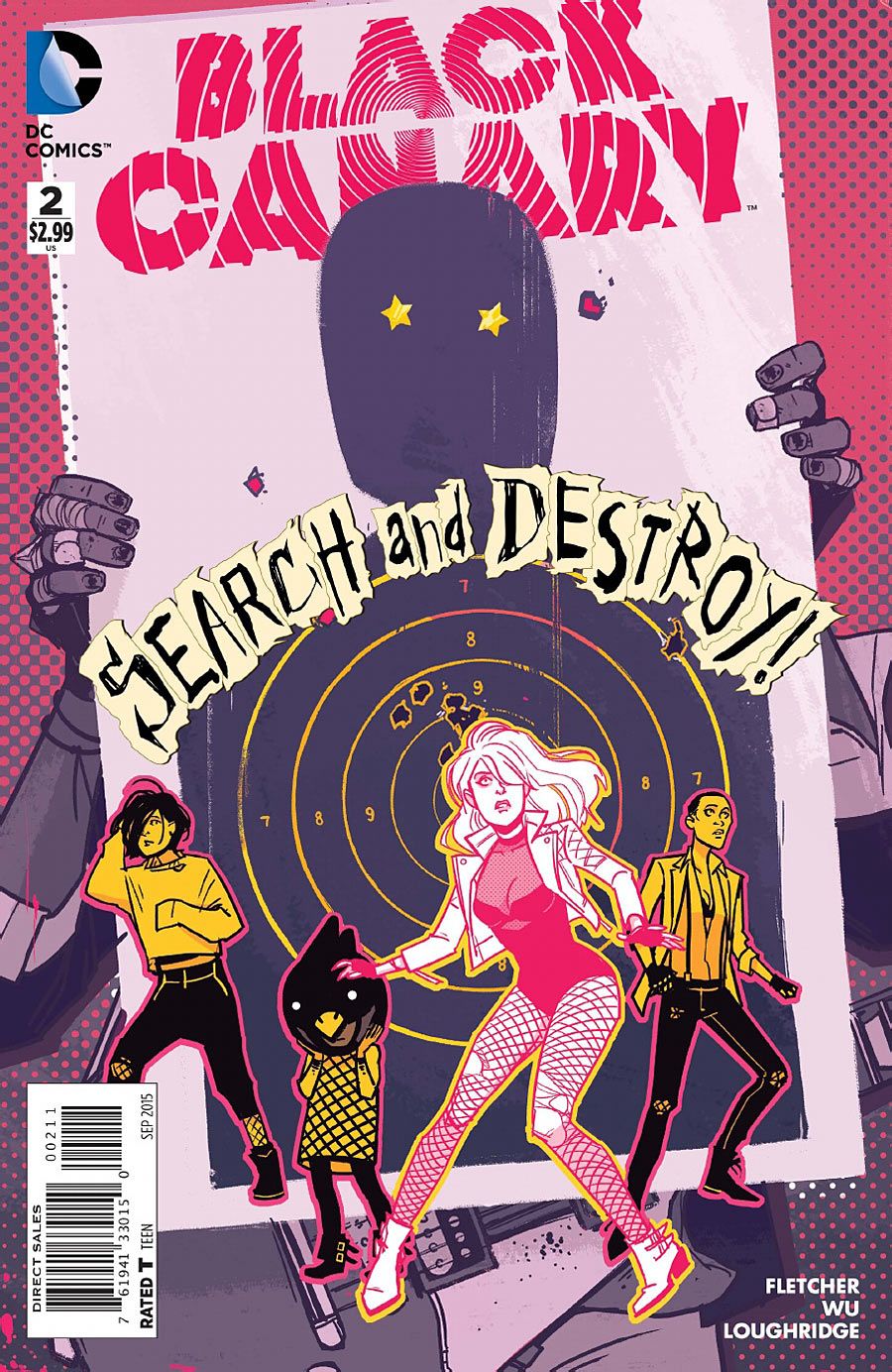Brenden Fletcher and Annie Wu use "Black Canary" #2 to bounce the band off of one another to mixed results. It's mostly an expository issue, as the group tends to their bus and quickly frays each other's nerves. It's a difficult position for the creative team as the scenario lends itself to confession, but the group of characters in the spotlight of this series is very coy with both themselves and the audience. It can lead to frustrating moments in the book and, though their motivations are justified, there are many places where the conflict could be resolved by basic communication. Even with that storytelling hiccup, Wu's art is an amazing fit for the story; her design and angular aesthetic lend themselves well to the DIY ethos of the band and the sort of image-conscious performance a band like this would require.
Slowly, the story revolves around pint-sized guitar ingenue Ditto. Her talents expand beyond the axe as she teases an ability to alter the perception of those around her using music. In a particularly gorgeous scene, Dinah waxes philosophical about Ditto's skills as the child plays behind her while she walks. Wu and Lee Loughridge break the reality of the scene, echoing Dinah across the page while coloring her in blocked-off vivid hues that culminate in an odd hallucination of Heathcliff as a rabbit. Small pieces like this and the diagrammed fight scenes with step-by-step cutaways of Dinah's action continue to make Wu's work stand out amongst the DC You pack. Under her pencil, Dinah is incredibly emotive, running the gamut from cocksure hellraiser to terrified target. Her action scenes crackle with energy; one can almost hear Ex Hex or Sleater Kinney or Courtney Barnett blaring in the background as Dinah beats her opponent silly with flutes in a music store fight.
The villain that is revealed at the end of the issue teases at a larger issue for the character that ties the book back to the more superheroic elements of the DC Universe. It's an interesting development but moves beyond the street-level threats that seem more in tone with this series. As proven in books like "Gotham Academy," Fletcher is able to pull disparate genres together to create entertaining narratives, so benefit of the doubt is easy to give here until readers have a full sense of the story at which he is driving. Editor Chris Conroy has a good track record with these sorts of stories as well, so fingers crossed that this is fretting over nothing.
As mentioned earlier, there are a lot of secrets bouncing around this series. Readers are introduced to the original singer for the group, who has been following them from gig to gig for a while, according to Dinah. With little in the way of revelation and secrets piling on top of secrets, it will be a challenge to make sure everything gets the attention it needs while still also being satisfying enough to justify the mystery. Readers may want to force these characters to simply sit down for five minutes and clear the air. Hopefully, the next issue will provide a little more illumination and less strange character introduction. While it's a great trope, it's also an easy one to mishandle.
Even with a few reservations, "Black Canary" #2 is still a fun read with amazing art. It's a great direction that revitalizes the character in a new context and finally lets Dinah have a chance to shine in her own spotlight.

